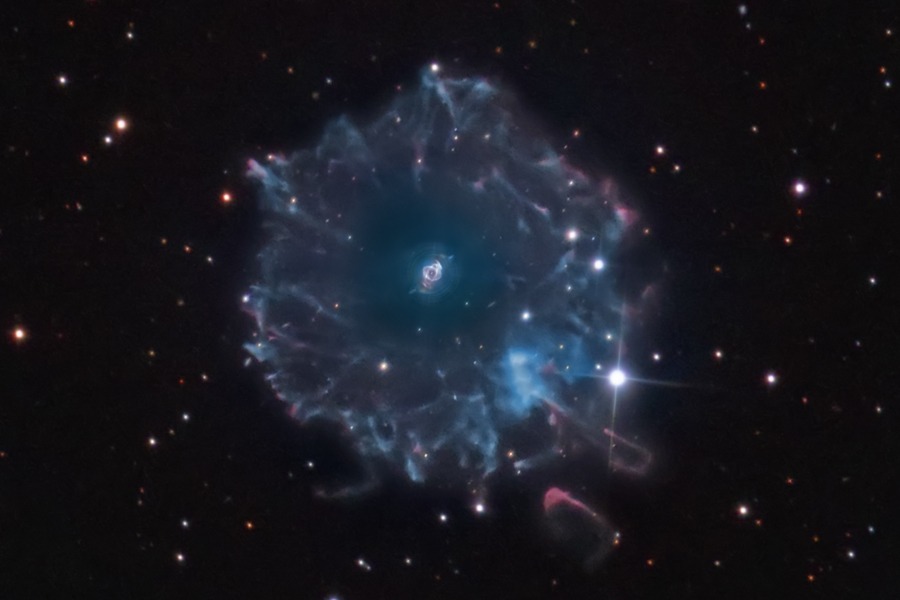I haven't done an APOD for a long, long time. Today's picture of the day from NASA

Halo of the Cat's Eye
Image Credit & Copyright: Don Goldman

Explanation: The Cat's Eye Nebula (NGC 6543) is one of the best known planetary nebulae in the sky. Its haunting symmetries are seen in the very central region of this tantalizing image, processed to reveal the enormous but extremely faint halo of gaseous material, about 6 light-years across, which surrounds the brighter, familiar planetary nebula. Made with narrow and broadband data the composite picture shows the remarkably strong extended emission from twice ionized oxygen atoms in blue-green hues and ionized hydrogen and nitrogen in red. Planetary nebulae have long been appreciated as a final phase in the life of a sun-like star. But recently many planetaries have been found to have halos like this one, likely formed of material shrugged off during earlier active episodes in the star's evolution. While the planetary nebula phase is thought to last for around 10,000 years, astronomers estimate the age of the outer filamentary portions of this halo to be 50,000 to 90,000 years.

















